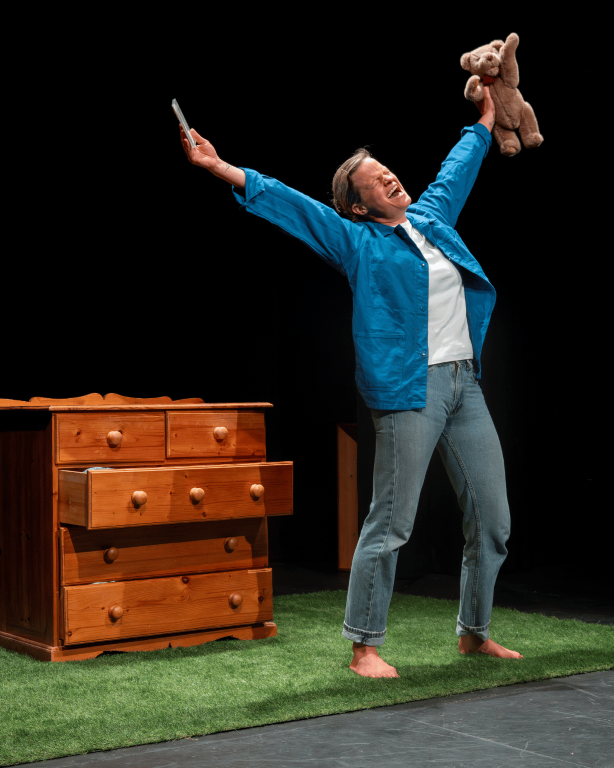A visceral performance and a clever script – this is one to watch.
With only Henri Merriam to provide the action, she carries the play magnificently, with a voiceover acting as her husband. At first it feels we are watching a woman eager for love, submissive to her man’s whims in desperate acts to please him. She moulds him into a loving companionship but what we may be witnessing is an indolent man’s willingness to shack up with whichever woman takes an interest in him. We see the decay of a relationship which has always been more in the narrator’s head than in reality.
The play speaks to women, perhaps a tad too obviously, about how we have been treated, how, if we become complicit in our willingness to do everything to hold on to someone, it leaves us depleted. We realise the extent of his dominance when she asks him what he does not like about her – ‘you don’t iron my shirts, you don’t fold my clothes’, leaving any feminists in the audience writhing with anger. Despite presenting as strong, love leaves her vulnerable.
The journey of one woman shifting from submissive wife to independent gorgon is a hard one to watch. But is she what she seems? There is more than a little of the unreliable narrator about this piece – she is soft enough to feel the sting of all her partner’s insults and to do all the housework with no help, but hard enough to resist taking his name on marriage. Either she is a compliant tradwife, or she is not. There are tantalising suggestions that she is not, and the narrative has included all the hurtful things he said to her, with nothing of what she said to contribute to his antagonism. Tellingly, a gooseberry bush that he bought her as a present recurs. He said it reminds him of her. But a gooseberry is prickly and bears bitter fruit. Maybe she isn’t so nice after all.
Is this about a bloke who systematically undermines a woman’s confidence, or about a crazy obsessive woman who wears her man down with her demands? Her obsessive love and unhinged mind unravels further as her relationship with her husband deteriorates. Merriam also wrote the play and gives an astonishingly raw performance as a woman determined to have a romantic relationship, but one which turns her into a jealous clinging vine. While this is a poetic script, we only get to see one side of the relationship. Another part, giving the man’s experiences of their union, might have provided more dramatic tension. However, the script also artfully weaves in references to defiant women in classical literature and mythology – the Biblical Eve, Catherine in Taming of the Shrew, and the Greek Medusa.
A nod to the set designer is warranted: With limited props – a large chest of drawers from which she pulls a handful of hay, party poppers, tissues, fish, lipstick, and Lego, Merriam manages to create the mayhem of her interior life. This inner turmoil reflects her small domestic world in which her need to keep her husband happy is paramount. The contents of the drawers are used then thrown on the floor. By the end of the play, the stage is a physical re-enactment of the dissolution of their relationship. A solid play which kept me riveted from beginning to end.
Writer and Cast: Henri Merriam
Director: Sophia Capasso
Set designer: Shahaf Beer
Running Time; 70 minutes, no interval
On until 14th June 2025

